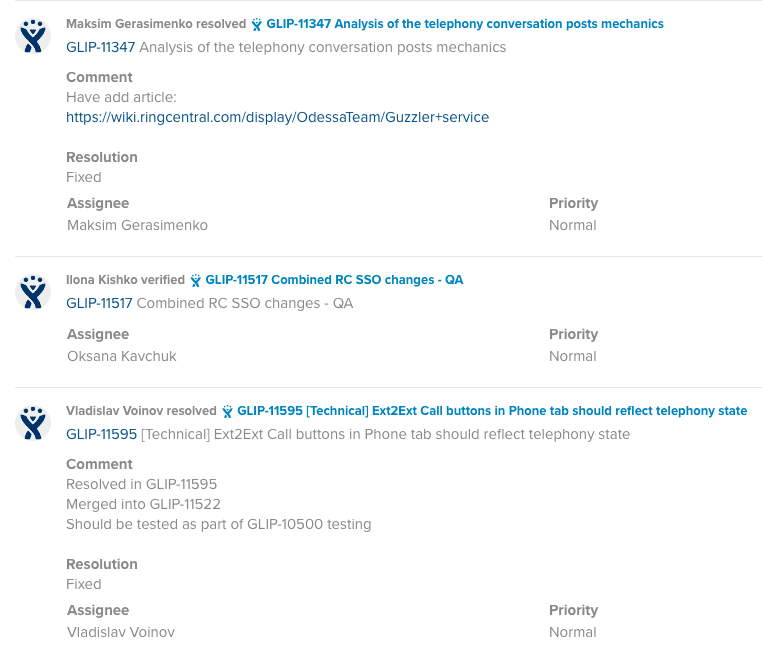Did you know that workflow management is more than a hundred years old?
It has its origins in the industrial age when Frederick Taylor (an industrial engineer known as the founder of scientific management) and Henry Gantt (of the Gantt charts) were studying efficiency in manufacturing units. Taylor believed in “scientific management,” and argued there was “one best way” of doing everything.
In the most Type-A way possible, under his watch, “…every laborer’s work was planned out well in advance, and the workmen were moved from place to place by… clerks with elaborate diagrams or maps of the yard before them, very much as chessmen are moved on a chess-board, a telephone and messenger system having been installed for this purpose.”1
The modern versions of these “maps?” They’re now mostly on the cloud, customizable and, in many cases, automatable.
These days, workflow management software can accomplish a lot more. So how can you get started with that?
We’ll show you. In this post, we’ll look at:
- What exactly is a “workflow?”
- What is workflow management software?
- Why you should use a workflow management software
- Making the most of your workflow management tool
- The lowdown on the 7 best workflow management software
What exactly is a workflow?
Getting a task done basically involves moving data (a document, service, or product) through a series of steps, people, or entire teams to completion.
For routine tasks with repeatable steps, you can draw out a map of this progression: that is your workflow.
Taylor and Gantt didn’t call it a “workflow.” Instead, they used the term “rational organization of labor.” Times were simpler then, and they were studying factories, where a bulk of tasks were repetitive and followed linear processes.
These days, workflows aren’t as straightforward. Instead, they come in varying shapes and complexity. They can be simple and linear… or not at all:
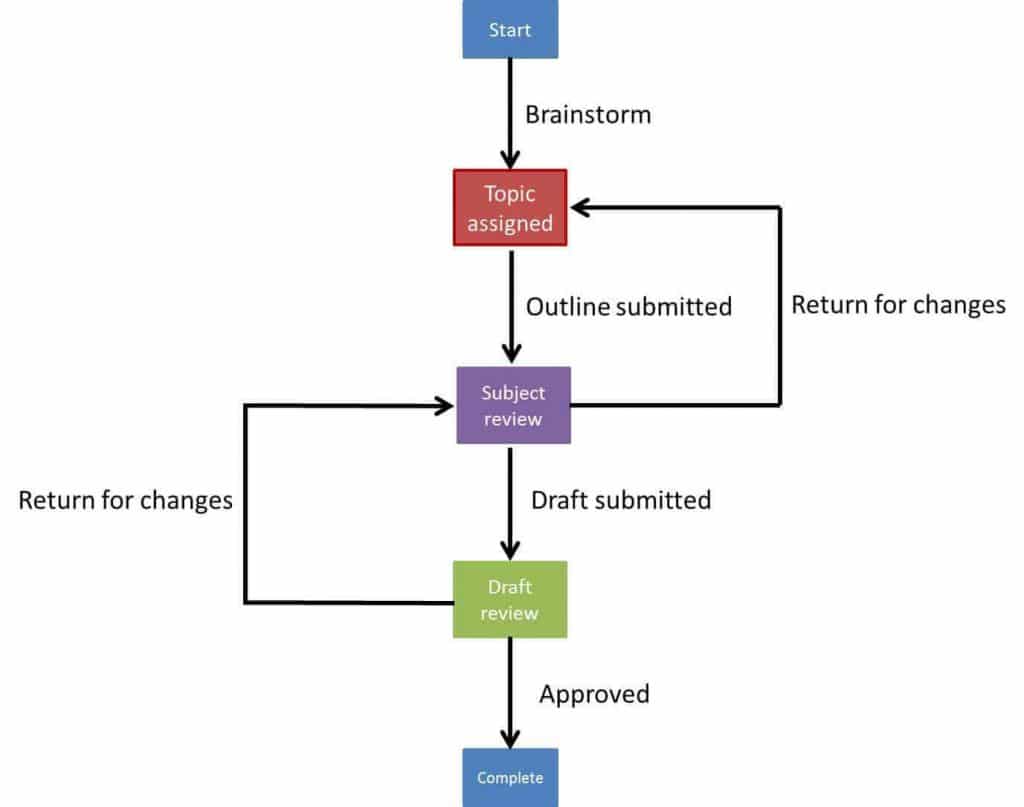
What is a workflow management software?
A workflow management tool is a software designed to make a routine business process more efficient by streamlining and automating it as far as possible. This way, it reduces the margin of error and tons of stress. (Taylor also believed it would end poverty, but that remains to be seen2).
Some tools like Asana or the RingCentral app literally “manage” the workflow by letting you create and track your tasks. Other tools streamline certain components of a workflow, for example, by automating it (like Zapier) .
Now, let’s get into the benefits of having a workflow management tool.
Why you should use a workflow management tool
Typically, workflow management apps:
- Provide a macro-level picture of your team’s projects (goodbye, status reports!)
- Automate some part of the process (goodbye, mind-numbing admin!)
- Highlight—or at least alert—teammates about incomplete tasks (goodbye, polite nudges!)
- Provide a way to centralize project-related communication (goodbye, emails!)
A lot of modern work is overwhelming for all kinds of reasons: large teams, complex projects, and intense pressure to be productive. Here’s how a workflow management tool can help:
- A workflow management tool brings all members of a team onto the same page while reducing costly paperwork.
- With many tools coming with built-in automation capabilities, busywork eats up less time so people can focus on the more creative aspects of their work. Sixty percent of all jobs have at least 30% technically automatable activities3, which is a mind-boggling opportunity for a productivity boost.
- Some tools allow you to measure and improve the efficiency of your business processes, adapting to different types of projects.
- Workflow management tools can save you heaps of time. How many hours do you spend a week doing repetitive, low-value tasks like adding information about your leads to your CRM or creating weekly reports?
Making the most of your workflow management software
Although great workflows are about standardization, the truth is no two teams are alike. There’s no “one tool fits all” and to prove it, there are now 272 different task managers and 777 project management apps listed on tech buying guide G24.
Different tools are built with different types and sizes of teams in mind: some might be specific to sales teams, while others like Jira are more suitable for product teams. Still, others like Trello are fantastic for individual users while also being great team collaboration apps.
Choosing the right workflow management app
Workflow management tools cost quite a bit on their own. Failing to take the time to choose and invest in the right ones means you could lose almost 10% of every dollar you invest to poor project performance5.
So, how do you choose the right tool?
Start by asking yourself a few important questions and making some notes about your existing processes:
- What are the features you and your team absolutely need your tool to perform? Are you particular about data security and privacy?
- Do you need the tool to run smoothly on mobile as well as on desktop apps?
- Decide what your goal is. Is it to save time? Is it to save every single version of a document created?
- Write down a few of your most challenging, time-consuming, or complex workflows. Draw it out on a piece of paper or use a digital tool like LucidChart so you can have an accurate picture. Put every little step down, even if it’s as small as “Darren photocopies the document and then hands it over to Lewis on the 3rd floor.”
- Note the apps that you already run things on and enjoy using. Include the ones your team relies on for communication, because you want the tool you finally select to support all these apps—or at least integrate with them. (We’ll show you just how useful integrations can be in the next section.)
- Gather your materials: all the checklists, templates, and process notes you might already be using.
- If you plan to use automation (and you should!), make sure the tool allows for them.
- Research all your options. We’ve provided a handy list in the subsequent section) and make a shortlist. Some tools might be great right out of the box. Others might need a little coaxing through app integrations to work properly.
- Bring everyone on board. So many teams find a new (and expensive) workflow management tool thrust upon them only to discover that they’re not able to “get” it. Is your team tech-savvy? You can explore feature-rich tools like Jira or Built.io Flow. If your team members are more visual thinkers, maybe a Kanban-style tool like Trello might be the best fit.
- Finally—and this is a crucial step: test your workflow. Do a few runs on the trial version of your tool to make sure that everything is smooth and there aren’t any snags along the way. This is especially important if you’re integrating one or more tools together.
Unless you have a really simple workflow, let go of the idea that there’s ever “one tool to rule them all.” Some teams end up using more than two project management tools at a time:
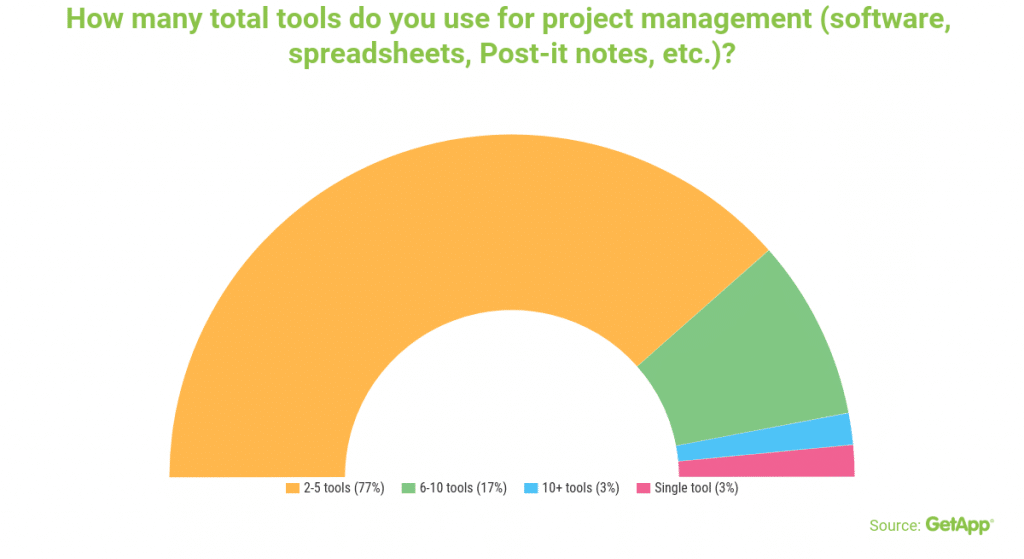
Although having multiple apps might be unavoidable for workflow management systems, there’s really no reason not to have one app to do all your communication.
Phone calls, video conferencing, team messaging, file sharing… you don’t actually need multiple tools to do those things! For example, you can do it all (and more) in RingCentral’s desktop and phone app. Here’s a quick look at how it works:
Which, by the way, has its own task management feature built right into the app. That means that if your tasks and workflows are pretty straightforward, you may not need a separate workflow management software:
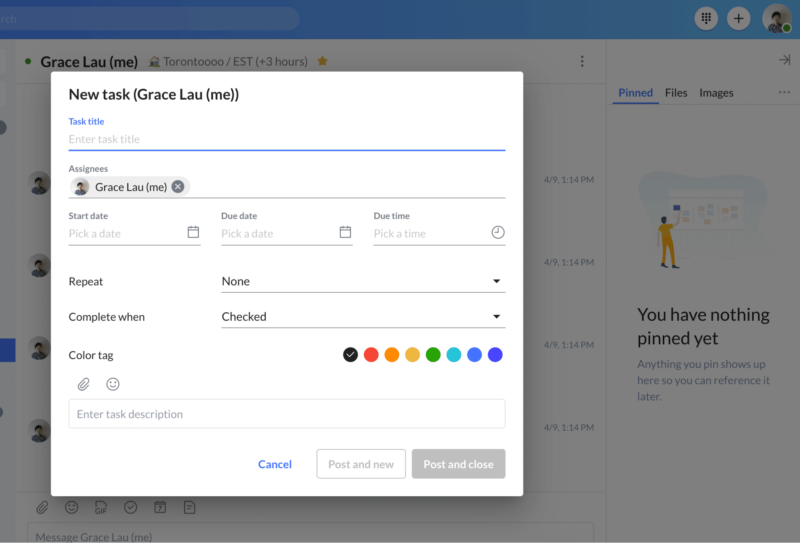
If the workflow management system you choose ends up falling short, you can connect different apps to build your own workflow from scratch with no-coding-needed tools like Built.io Flow or Zapier.
Now, let’s look at a few workflow management tools, along with examples of integrations that can help you speed up your workflow.
The 7 best workflow management software
1. Trello
What it does
Trello is a highly visual, collaborative project management tool that follows the popular Kanban system. It allows you to organize your tasks into manufacturing-style instruction boards, giving everyone a visual overview of what’s being worked on, who is completing the tasks, and where a task is in a process:

Strengths
- It’s mobile friendly—you can use it on a computer, tablet, or phone.
- It has a built-in automation tool.
- It can be used by both individuals and large teams.
- You can create a highly customizable (but linear, so you can’t get too fancy) workflow.
Drawbacks:
- You need to have internet to use it.
- It can be difficult to handle large projects with multiple teams around the world.
- The Kanban system is best suited for highly visual, “big picture” thinkers, and some teams may have trouble adapting to it.
Pricing
Trello has three pricing tiers: Free, Business Class ($9.99), and Enterprise—which starts at $20.83 per user for 20 users.
Integration with RingCentral
- Get notifications in your team chat from Trello on project changes. The benefit of this is that you can tag your teammates directly in the chat, giving you a single-view work environment:
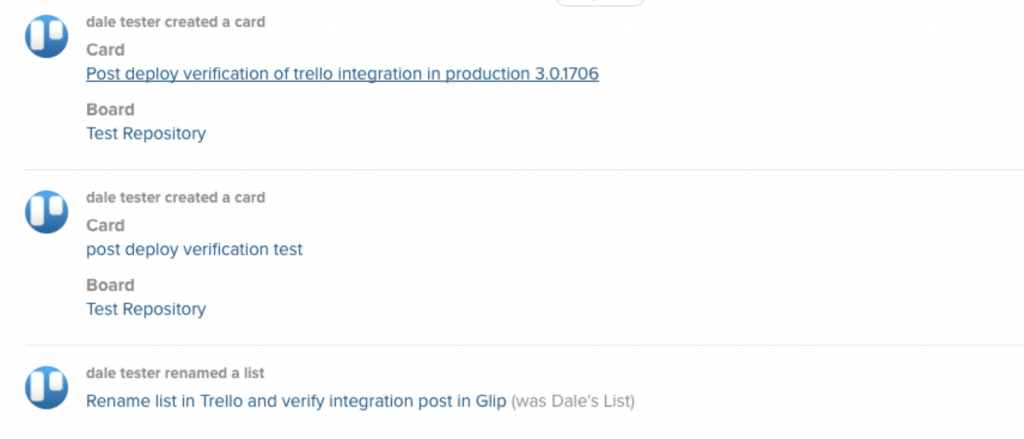
- RingCentral also automatically shares Trello notifications to your chosen team messaging conversation, so that even people who don’t have a Trello account can be up to date on projects.
2. Asana
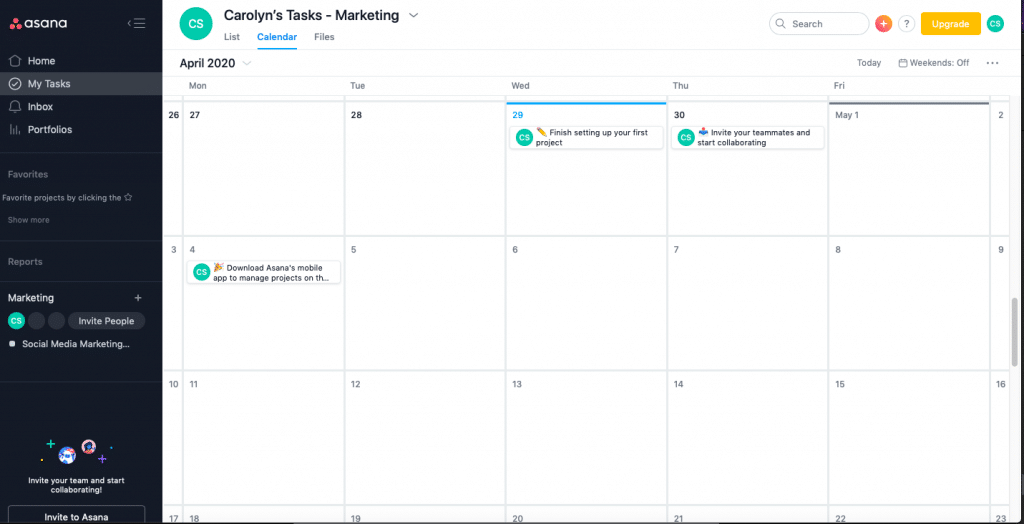
What it does
Asana is a project management tool that’s been described to provide “a 36,000 ft view of all projects.” Every individual can keep an eye on their own task list as well as the big picture.
Strengths
- It’s flexible. There are multiple project views (including Kanban), making it suitable for many types of teams.
- Asana comes with a tremendous range of integrations such as Dropbox, Salesforce, Google Calendar, and more.
- It’s a great collaboration hub for teams—you can send a link to invite people to work on a project with you.
Drawbacks
- The number of features can be overwhelming, and it might be overkill for small teams and single projects.
- That’s kind of it, really. Full disclosure: we use Asana to manage our content calendar and we love it.
Pricing
Asana has three standard pricing tiers ranging from $0 to $24.99, billed annually. There’s also an enterprise plan that you’ll have to chat with a sales rep to get more information on.
Integration with RingCentral
- Get updates in your RingCentral team messaging conversations if any changes are made to your Asana tasks:
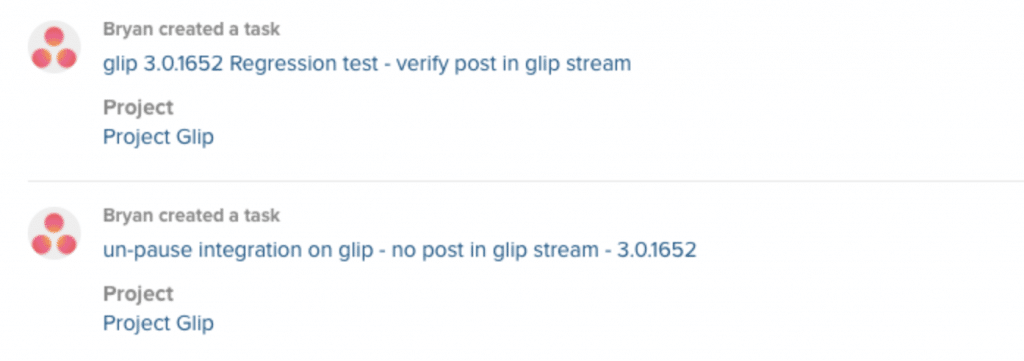
- Pulls updates directly into the RingCentral app instead of receiving notification emails from Asana.
🕹️ Get a hands-on look at how RingCentral works by booking a product tour:
💰 You can also use this calculator to see roughly how much your business could save by using RingCentral to support your team’s communications with clients or customers, and each other.
3. Built.io Flow
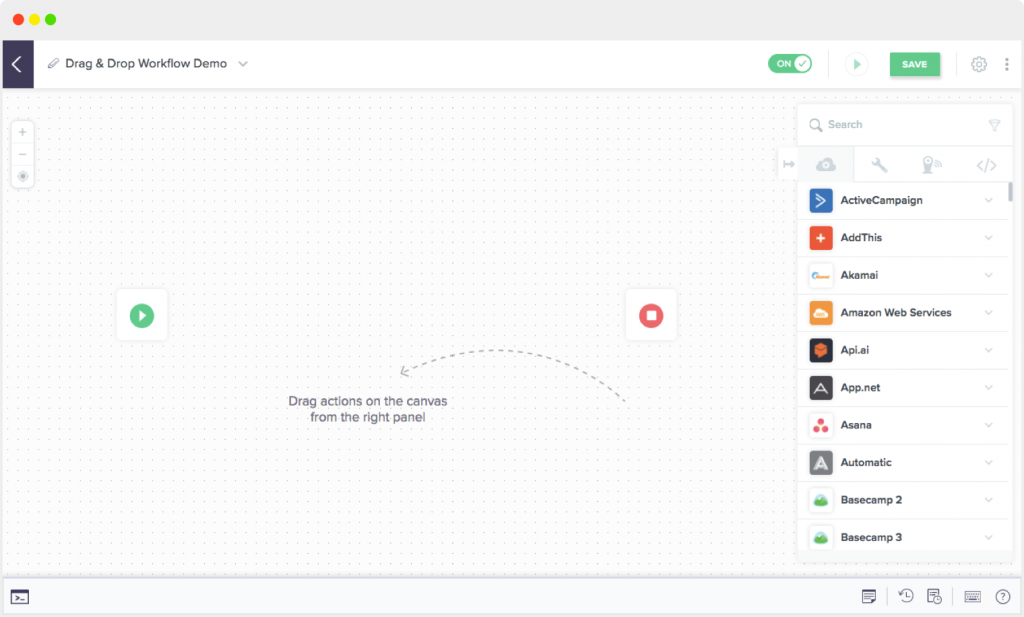
What it does
Built.io Flow is an integration platform that lets you drag-and-drop to build your own workflows and automate tasks.
Strengths
- It’s a ready-to-use platform so setup is pretty straightforward.
- It allows you to debug and test your workflows from the same dashboard.
Drawbacks
- There’s a steep learning curve involved for “non-techy” people, and it doesn’t come with video tutorials.
- You have a memory limit of 256MB per workflow.
Pricing options
Built.io Flow has three paid tiers starting at a steep $1,200 for the basic plan. It’s rather expensive for light users.
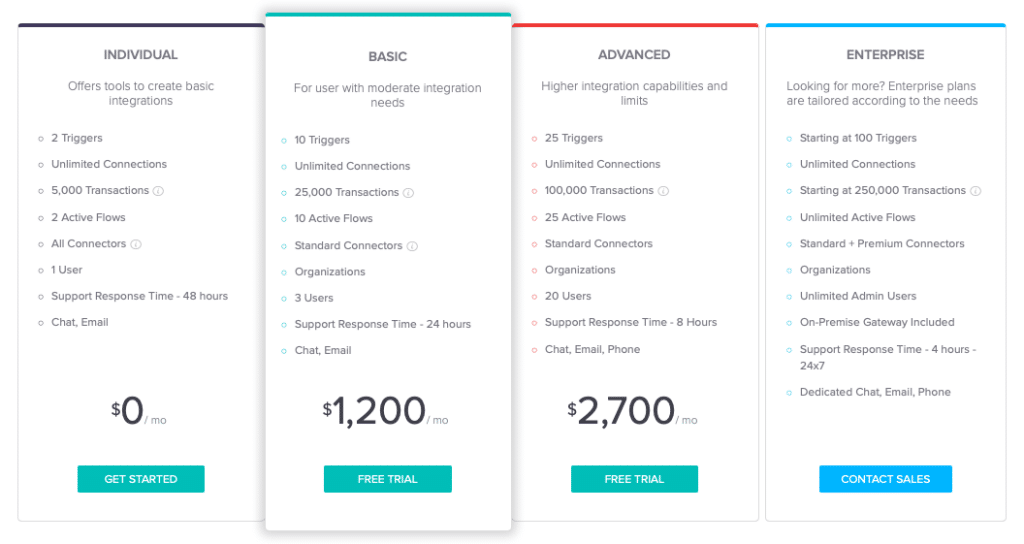
Integration with RingCentral
You can build your own workflows between RingCentral and 150+ other apps. Here are some triggers you can add to your workflow:
Supported triggers
- Trigger when the user records a new call.
- Trigger when the user has missed a new call.
- Trigger when an SMS is sent or received.
- Trigger when the user starts a call.
- Trigger when the user ends a call.
- Trigger when the user receives a new voicemail in their account.
- Trigger when the user receives a new fax.
And here are a few actions that you can automate:
Supported actions
- Create a new contact with specified data.
- Delete specified messages.
- Download available attachments.
- Collect call logs available to you.
- Collect available company information.
- Collect available phone numbers.
- Collect available user contacts.
- Initiates a call between two phone numbers.
- Fax a document to someone.
- Send SMS/MMS with text and/or media specified.
- Automatically update contacts with specified data.
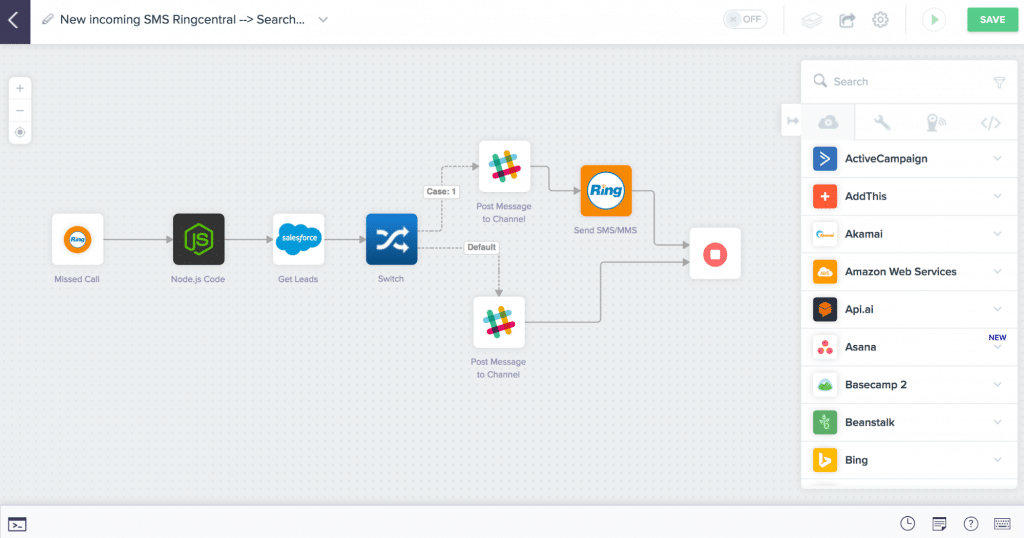
4. Jira
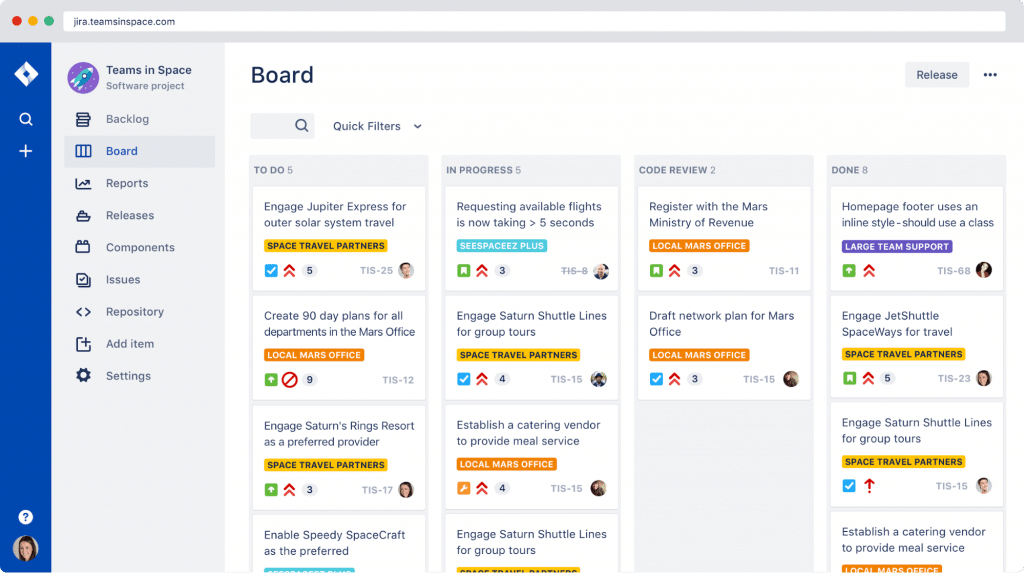
What it does
Originally designed as a bug and issue tracker, Jira has now evolved into a fantastic overall project-tracking software. Ideal for software teams, Jira also has great use cases in finance, technology, healthcare, retail, and manufacturing.
Strengths
- Jira is super flexible, supporting both agile and traditional modes of project management.
- It offers time-tracking and real-time performance reports (burn up/ burn down charts, sprint reports, velocity charts)
- It allows you to build your own workflow.
Drawbacks
- Its mobile app is not quite as effective as its desktop app.
- Jira’s emphasis is on tracking rather than just on workflows, so its features can be quite unwieldy and overwhelming for non-technical folks.
Pricing
Jira offers three pricing tiers, from $0 to $14, supporting up to 5,000 users.
Integration with RingCentral
- Tag teammates on your Jira updates directly from within the RingCentral app to have a single view of everything that’s going on with your project.
5. Zapier
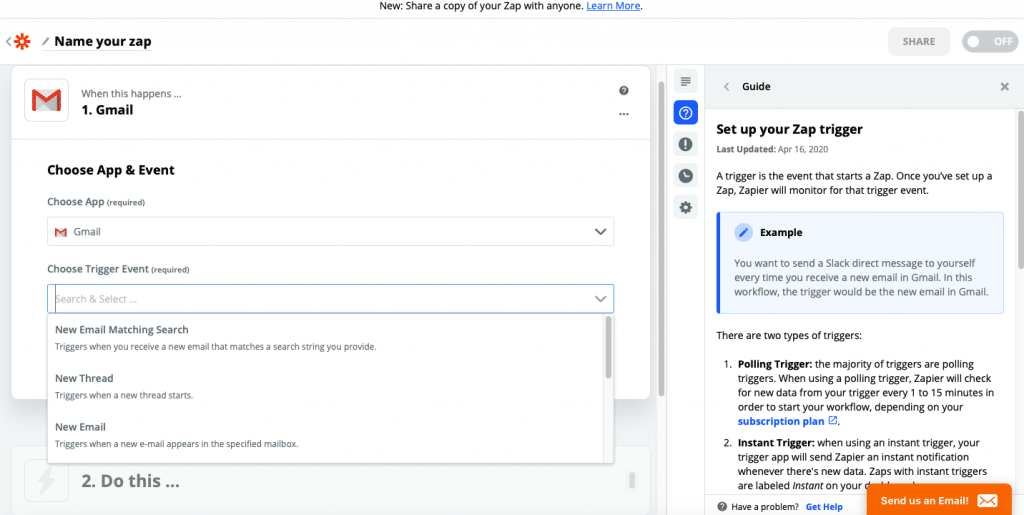
What it does
Zapier isn’t a workflow management tool per se, but it’s indispensable to a smooth workflow. It makes use of an “If this, then that” form of encoding (which they call “zaps”) and allows you to connect two or more apps in this way.
It’s a pretty intuitive tool, and it’s a good option if your own apps don’t support too many integrations out of the box.
Strengths
- Zapier connects over 2,000 apps, so it probably has a zap for whatever tools you’re using.
- It is intuitive to understand and effective.
- It’s flexible and accommodates a variety of needs and uses.
Drawbacks
- Some app integrations have limited triggers.
Pricing
Zapier has five pricing tiers, and each tier limits the number of apps you can connect, “zaps” you can create, and the number of tasks (anywhere between 100 to 100,000) you can execute per month.
Integrations with RingCentral
The list of things you can do with Zapier and RingCentral is staggering. Here are just a few:
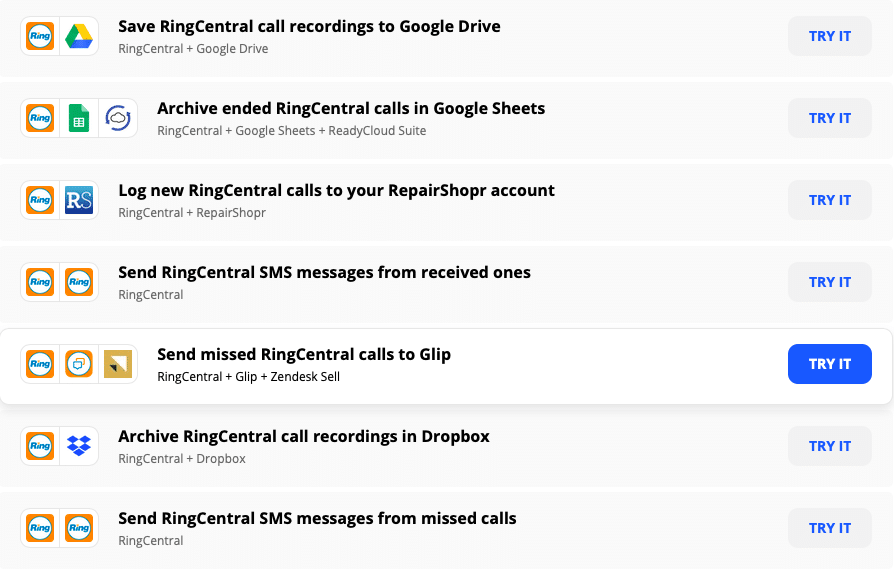
You can also…
- Archive missed RingCentral calls in Google Sheets so you can track them.
- Send RingCentral call recordings via email.
- Send email via Gmail for missed RingCentral calls.
- Save RingCentral call recordings to Google Drive.
6. GitHub
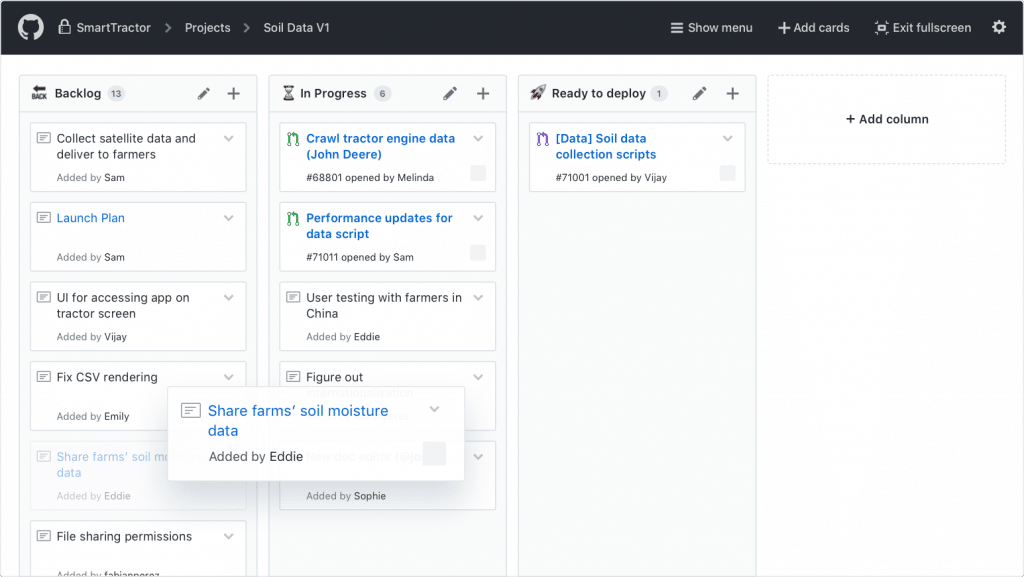
What it does:
GitHub is a collaborative development platform for building software. It allows coders to host and review code, and also manage projects. Its project management tool allows project managers and developers to coordinate, track, and update their work.
Strengths:
- It offers version control.
- It allows you to host your project online, so anyone can access it.
- It’s great for open-source projects.
Drawbacks:
- Although it has a comprehensive resource for almost any issue on GitHub, its customer support services are available only for the enterprise tier and above.
Pricing:
GitHub has three paid tiers starting at $4.
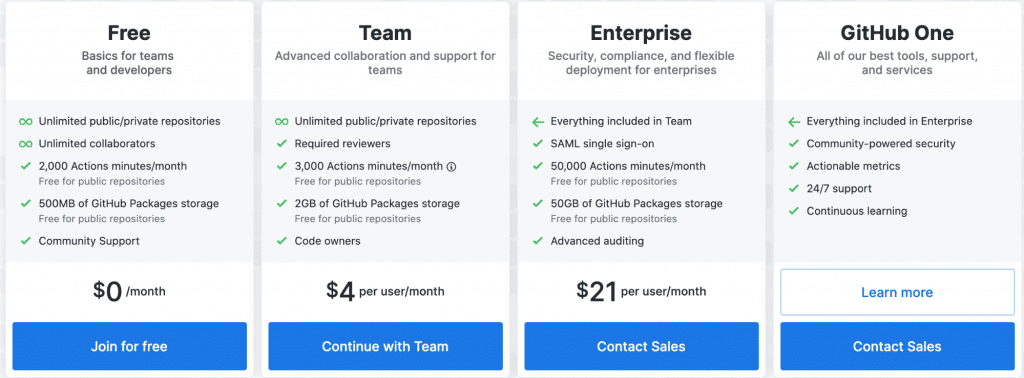
Integration with RingCentral:
- When a RingCentral call ends, immediately create a new issue on GitHub:

7. ServiceNow
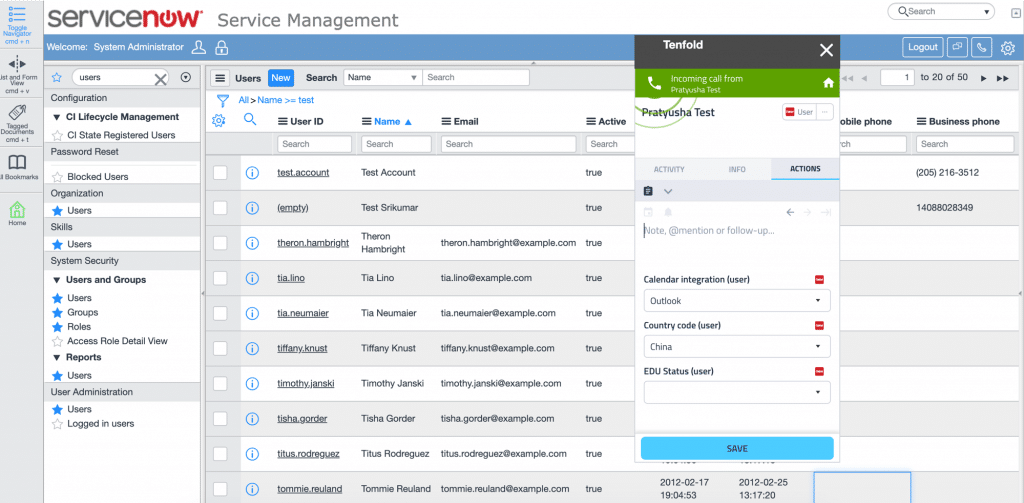
What it does:
ServiceNow lets you create digital workflows for IT, HR, finance operations, and customer service departments to improve productivity and streamline processes based on your goals.
Strengths:
- ServiceNow is highly customizable, so you can adapt the workflow to your unique business needs.
- It also allows you to build your own workflow in a pinch.
Drawbacks:
- Its interface can be a bit quite chaotic and cluttered.
Pricing:
ServiceNow offers custom pricing, and you’ll need to email them or contact them through their website to get a quote.
Integration with RingCentral:
- Take notes, tag a colleague, or create tasks on ServiceNow while you’re on an active call.
- Click to make a RingCentral call directly from your ServiceNow dashboard.
Workflow management tools can transform your productivity
Although efficiency shouldn’t be the be-all and end-all in the way organizations think about work6, an inefficient team or organization can be quite a drag on work culture
On the other hand, a more productive team goes home early. It does more with the same resources and chances are, it’s happier doing it.
Choosing the right tool and switching to it can be time-consuming, but well worth it.
When you bring a chaotic team onto a workflow management platform and automate repetitive tasks, you liberate your employees to focus their creative energies on actual problem-solving.
You help them to find joy in their work.
1, 2 bl.uk/people/frederick-winslow-taylor
4 hbr.org/2020/01/create-a-productivity-workflow-that-works-for-you
6 hbr.org/2017/03/great-companies-obsess-over-productivity-not-efficiency
Originally published Mar 16, 2020, updated Feb 18, 2021


